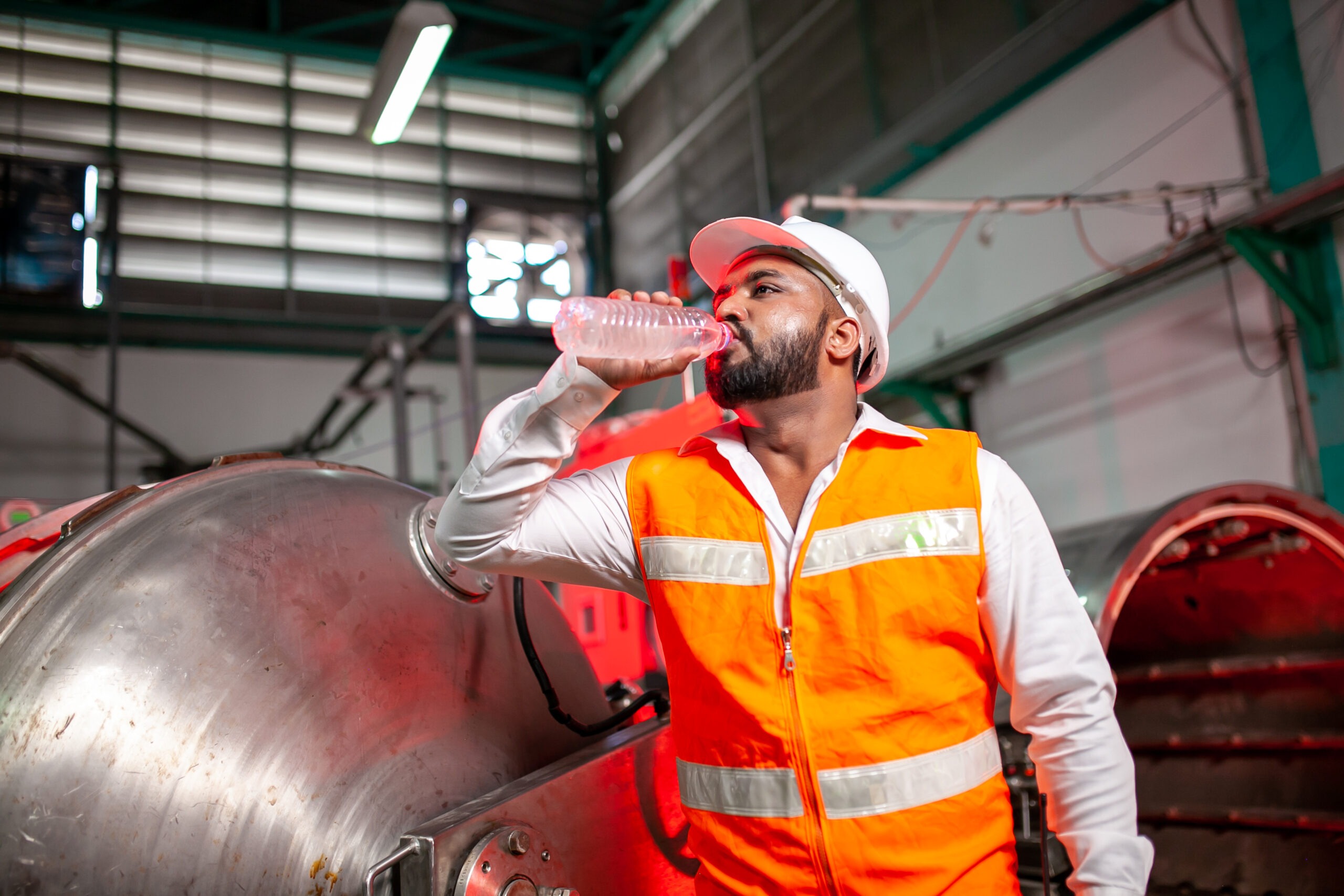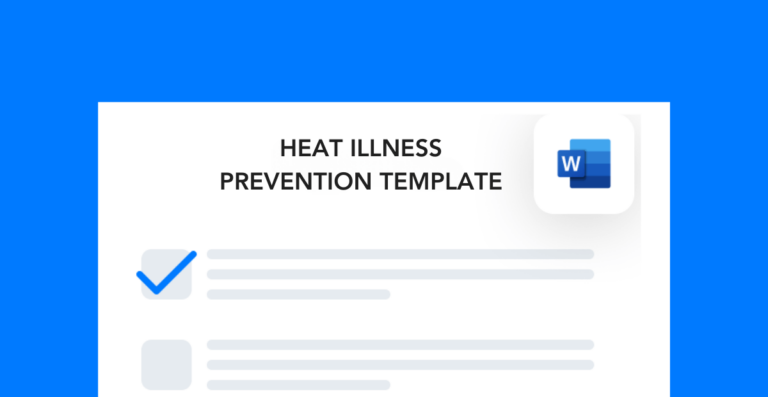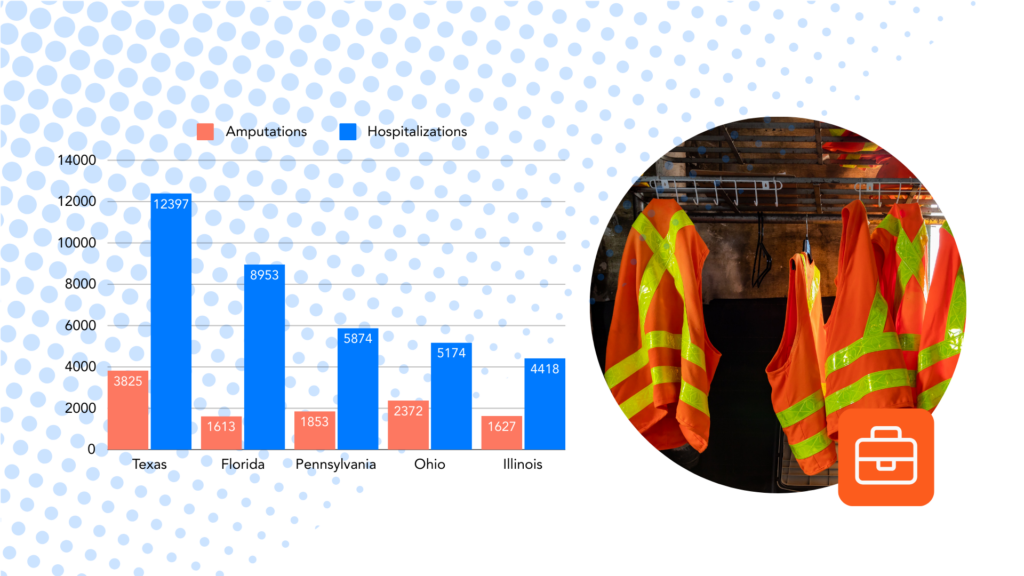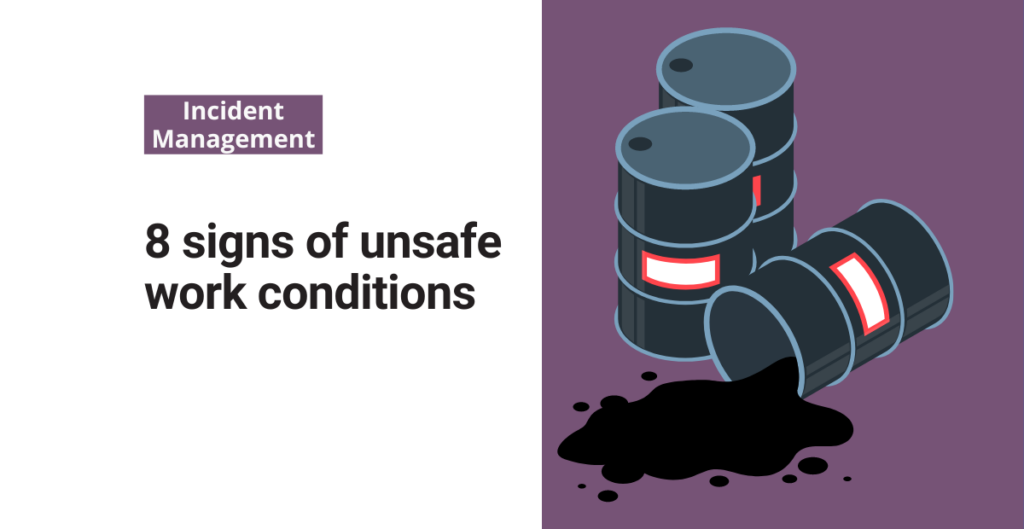From dehydration and fatigue to increased chances of accidents, extreme heat can pose serious risks in the workplace. That’s why it’s essential to take proactive steps to protect your team. These summer safety tips for work will help reduce incident rates, encourage healthy habits, and create safer job-site conditions all season long.
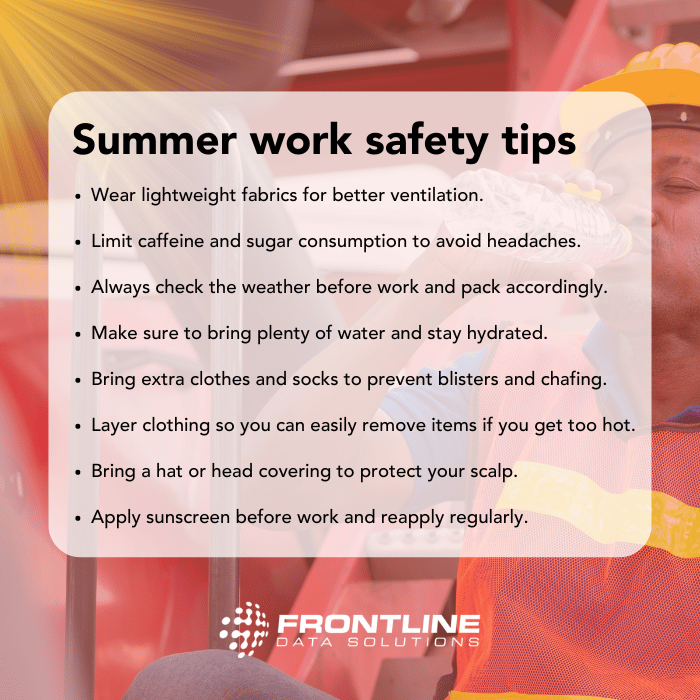
Summer Attire and Grooming Tips for Heat Safety
One of the best ways to prevent heat illness during the summer is to dress appropriately. Workers should come prepared with multiple clothing options in case temperatures rise or fall throughout the day.
As an employer, you’re responsible for creating safe working conditions. That may include enforcing specific attire and grooming standards during the hottest months. Here are some related tips for summer safety that you can share with your employees:
- Wear lightweight fabrics for better ventilation.
- Keep long hair pulled back, away from the face and neck.
- Choose light-colored clothing to stay cooler.
- Wear sunglasses in direct sunlight.
- Layer clothing so it’s easy to adjust for temperature.
- Apply sunscreen before work and reapply throughout the day.
- Bring a hat or head covering to protect the scalp from sun exposure.
Make sure your team understands any PPE requirements that apply specifically to hot weather conditions. Clear communication will help workers come prepared and stay safe.
Summer Safety Tips for Worker Behavior
Another key factor in summer safety is how employees behave on the job. Good habits make a big difference in preventing heat-related illness and fatigue. Encourage your team to follow these behaviors during the summer:
- Keep a spare water bottle in your car, bag, or locker.
- Check the weather forecast before work and pack accordingly.
- Limit caffeine and sugar intake to avoid headaches and energy crashes.
- Prioritize hydration throughout the shift, especially during peak heat.
- Take regular breaks in shaded areas and use portable fans if needed.
- Avoid sun exposure during peak hours when possible.
- Snack on hydrating foods like cucumbers, tomatoes, and watermelon.
- Bring a change of clothes and socks to prevent chafing and blisters.
Small behavioral changes can significantly reduce the risk of heat illness and keep employees focused on safety throughout their shift.
Creating a Safer Workplace During Summer
It’s up to each company to create working conditions that protect employees from extreme heat. That might mean investing in new equipment, adding policies, or tweaking your schedule to reduce exposure.
Here are some summer safety tips for creating a safer workplace:
- Perform a job hazard analysis for outdoor work to identify heat-related risks
- Invest in fans, tents, and portable generators to keep workers cool and dry
- Schedule jobs to avoid the hottest times of day whenever possible
- Offer extra breaks when temperatures rise
- Perform preventative maintenance on HVAC systems and fans
- Set up additional hydration stations at outdoor worksites
- Provide free snacks and drinks to encourage hydration and energy
- Create a first aid area where workers can rest if they’re not feeling well
- Stock up on hydration popsicles, water, and other emergency supplies
Make sure your team understands the symptoms of heat illness and knows to speak up if they’re feeling unwell. Sharing these summer safety tips and setting up the right environment will help everyone stay safer on the job.

